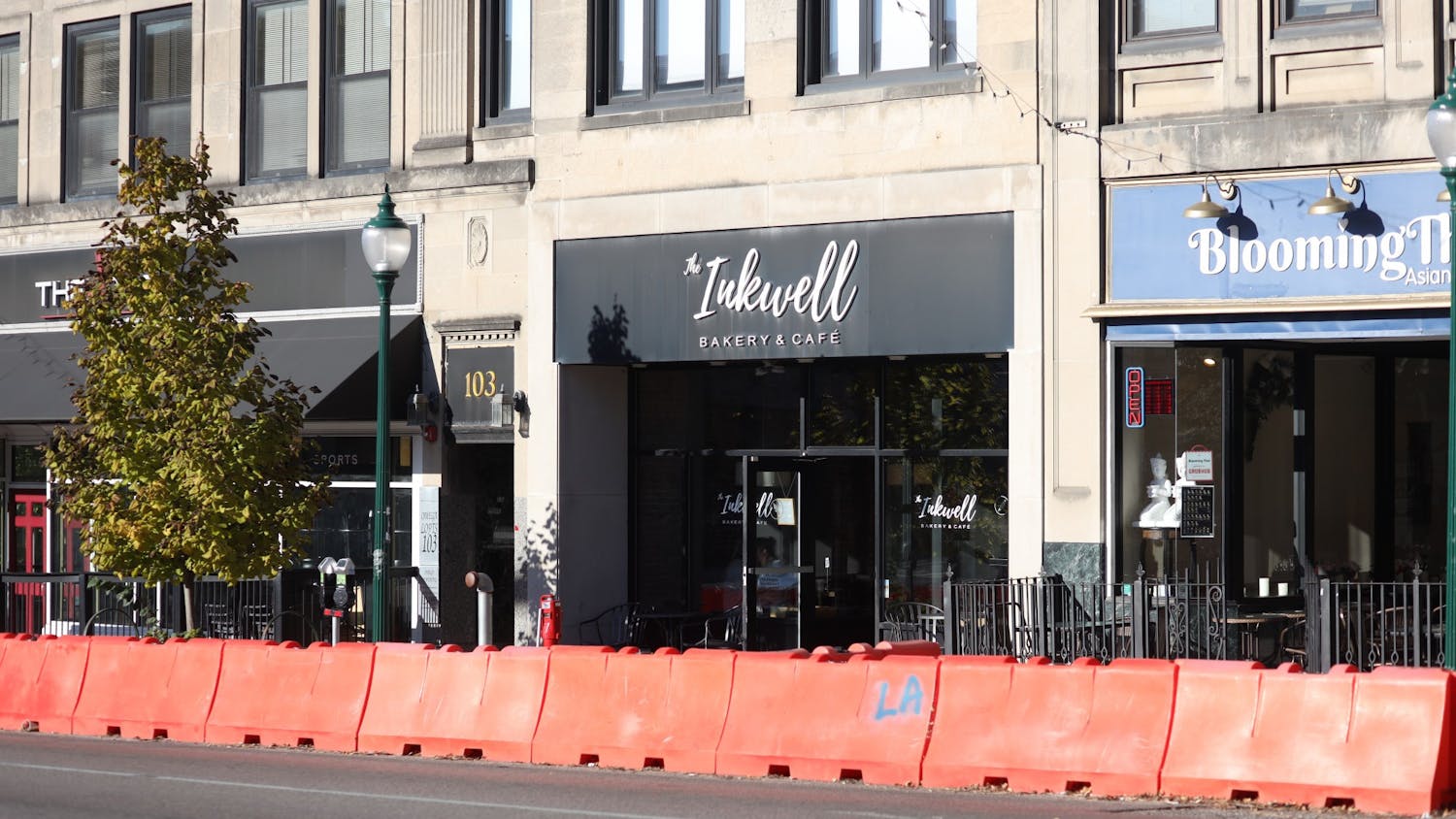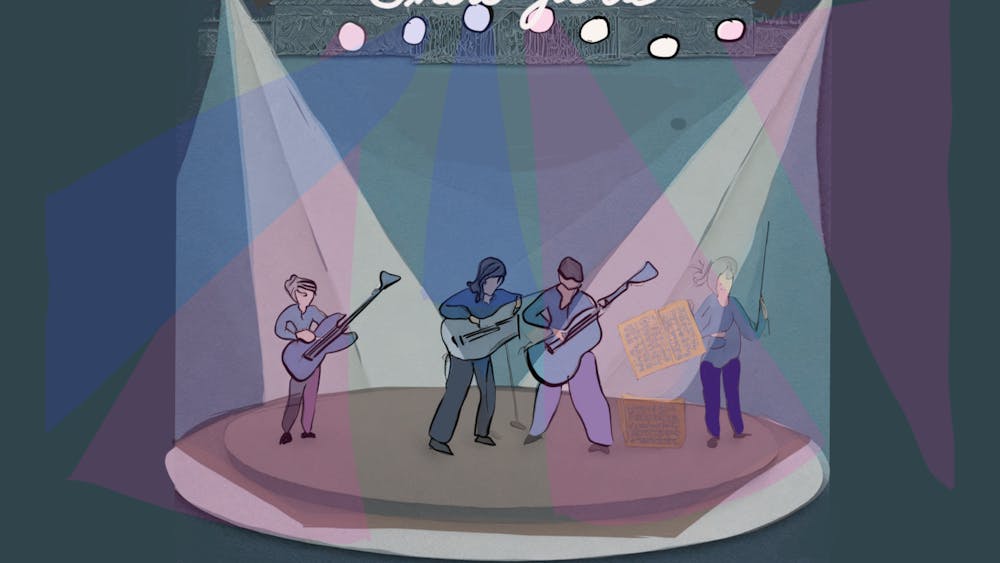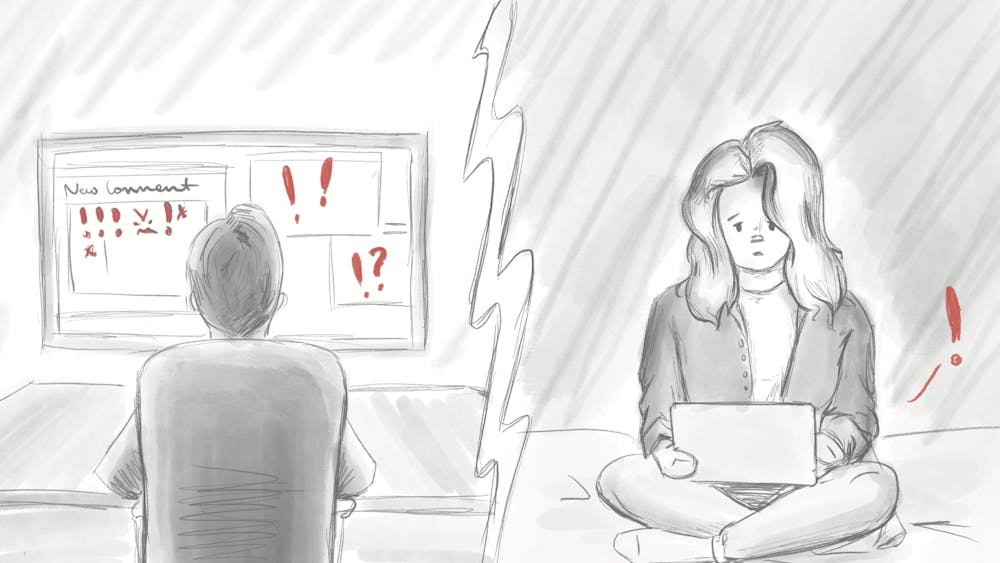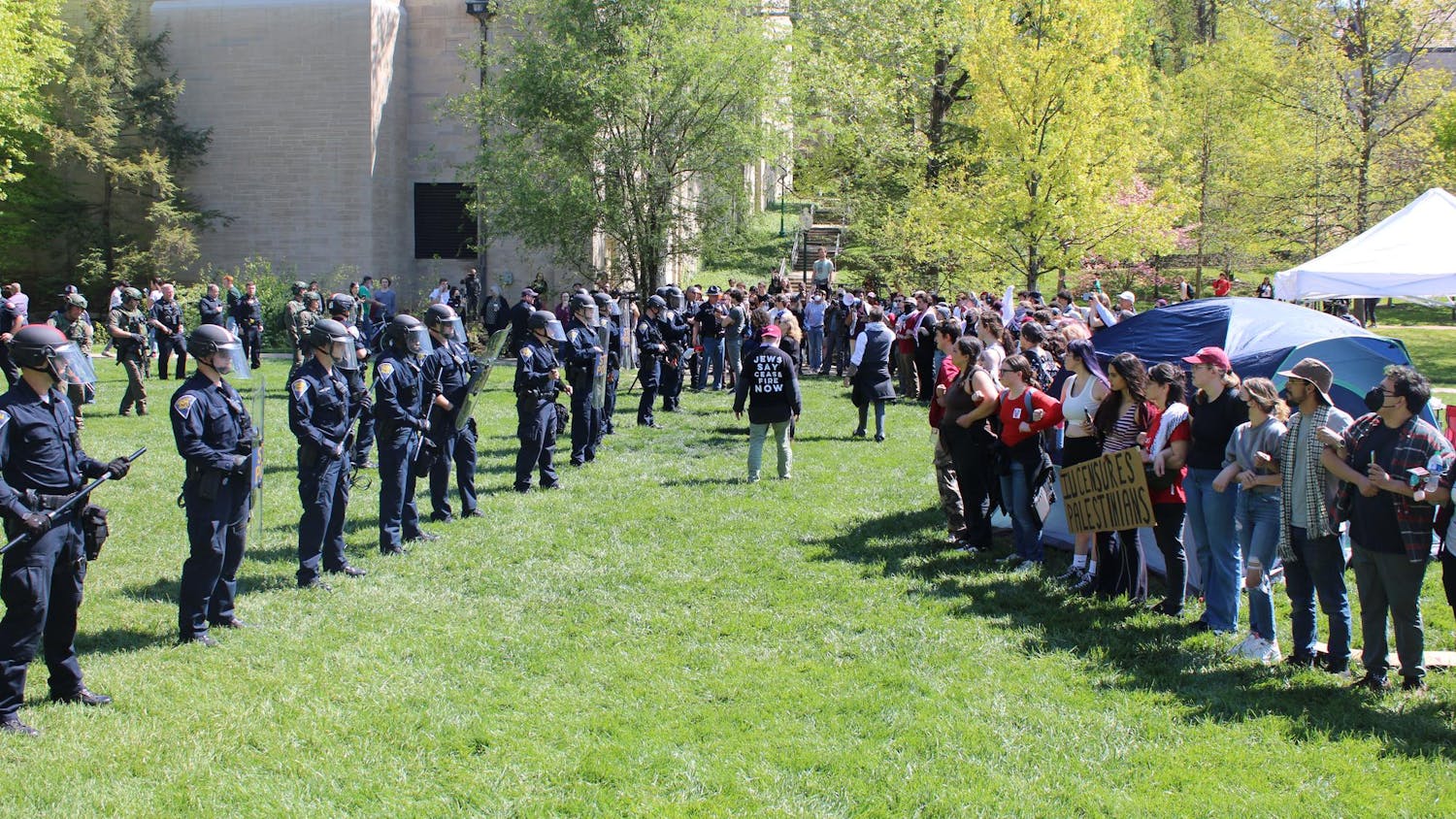Two local artists have undertaken a project that will serve as a gateway into the Bloomington Entertainment and Arts District for Bloomington’s southside community.
(C)olumn will be a 13-foot tall stainless steel configuration of words meant to represent the renewal of the Bloomington area, as well as its history. The words chosen to express Bloomington will come from the community itself, so they will be direct representations of the community’s opinions.
In order to accurately reflect the city through words, artists Jon Racek and Jiangmei Wu have requested input from the Bloomington community. Single words or short phrases that best describe Bloomington can be submitted at columnbloomington.com.
Submissions will be accepted until April 16.
These submissions will then be presented on the website so others can view them, and a number is added next to the word to show how many times each word has been submitted.
The parenthesis encapsulating the “C” in (C)olumn characterize the structure’s creative design shape. The project will be formed in the shape of a “C.” This shape will be apparent from a bird’s-eye view, and the structure will expand upward in a cone-like shape, Racek said.
In addition, the “C” illustrates some central themes that the words will focus on throughout the art project.
The theme of connecting culture and community also plays into the “C” concept of the project’s title.
The idea is to connect the cultural and historical aspects with the local renovations of the communal neighborhood that encompasses Second and South Walnut Streets, where the structure will be built, according to the project’s design concept.
(C)olumn planners Racek and Wu work as faculty lecturers in IU’s Department of Apparel Merchandising & Interior Design. Wu earned her master of science in interior design as well as a master of fine arts in graphic design from IU. Racek received his master of architecture from the Southern California Institute of Architecture in 2004.
The plan for (C)olumn, which they began brainstorming last summer, is to give community members something to look through and reflect upon when entering and exiting the BEAD district. Racek and Wu said this is their first public art project that has been accepted.
“The idea is that you step inside the column and read the words with the city itself as the backdrop,” Racek said.
The (C)olumn website asks submitters to describe Bloomington in one word, what they enjoy most about Bloomington, why they love Bloomington and where they like to go in Bloomington. Submissions for each answer are limited to 20 characters.
Some of the more recent, common submissions include “home,” “people” and “arts.”
Some of the more humorous submissions include “insufficient parking” and “little green place.”
Students, local or otherwise, are encouraged to volunteer their own submissions, Wu said.
To properly represent a college community, Wu said it must also represent the college students.
“Students are an important part of the Bloomington community,” Wu said. “This is not just for long-term Bloomington members. The more ideas we get, the more authentic this project can be.”
Rasek said (C)olumn will be created using a high-tech process.
“The digital fabrication, I think, is interesting,” Racek said. “We will basically be taking a digital file and sending it to the fabricator, and they will be cutting all the text.”
Initially, the structure’s shape will be designed in a 3-D modeling program.
From there, the text will overlap the form. A fabricator will use a laser cutter to shape the words from six 5-by-10-foot stainless steel sheets, and will weld and roll the sheets.
“We construct it in the 3-D modeling program,” Racek said. “We sort of deconstruct it, flatten it out and then we create it back into 3-D form through the fabrication process.
Finally, we will install it onto the site.”
Wu said the 3-D modeling program is also useful for making sure the artwork will fit properly and not interfere with traffic.
The complete structure will be complete before Wu and Racek install it at its final destination.
(C)olumn is expected to be a large, salient landmark, and will be illuminated at night once it is erected.
“It will be big,” Racek said. “You know, we are cutting away a lot of material, but it will still be pretty heavy.”
BEAD is a downtown cultural hub that comprises a 60-block radius. (C)olumn was proposed to and is funded by Bloomington’s Percentage for the Arts program.
(C)olumn is meant to not stand only as a landmark, but also as a lens through which to see certain shops, historical landmarks and neighborhood attractions.
Viewers will be able to see Seminary Park and the Chocolate Moose while standing inside the (C)olumn, Wu said.
Racek said the structure will be designed so that two or three people can stand in it at a time.
“The Chocolate Moose is usually a hotspot for us, especially when you have kids,” Wu said. “And it would be really nice to have a sculpture there for people to explore.”
The sculpture that will signal the start of BEAD district has not yet been created.
Racek and Wu said that they hope to have the artwork finished in August, and then they will place it on the southwest corner of Second and South Walnut Streets sometime this fall.
“I think we approached the public art aspect of the commission in a sort of a different way,” Racek said. “We came up with a method of creating a piece of art, and then rely on the community to add the content.”
Racek and Wu both said that they are interested in making future proposals for public art displays after (C)olumn is complete.
“I think we are focused on this particular project,” Racek said, “but we will look around for other things when we are finished.”
BEAD plans for symbolic art sculpture
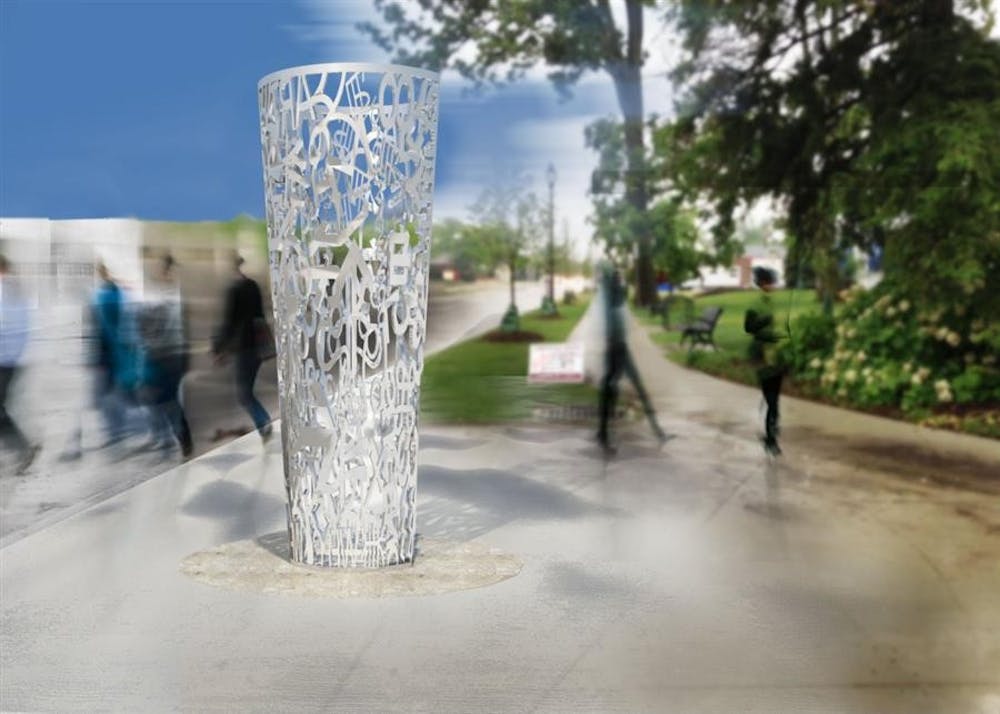
Get stories like this in your inbox
Subscribe


